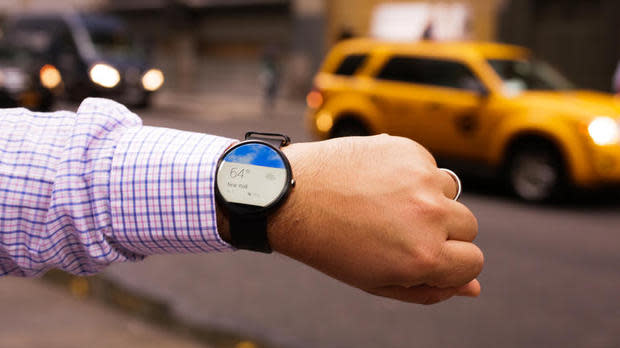Android Wear smartwatches: The benefits for professionals

Image: Sarah Tew/CNET
andrdwr.jpg

Android Wear's launch in early 2014 set a new benchmark for wearable technology. With slick advertising videos, and the beautifully round Moto 360 as a companion launch, Android Wear helped push wearables forward.
Still, as with most wearables, the value of Android Wear for professional users has been cloudy at best. Ryan Martin, an analyst at 451 Research, said that we should be measuring wearable usefulness by looking at what he calls time on task efficiency.
"They're well-equipped to fill a lot of needs in the enterprise where employees need quick updates on timely information, but also can't afford the distraction of being fully immersed in whatever the system is," Martin said.
The glanceable nature of most smartwatches does indeed make them a great way to quickly access notifications, but Android Wear devices do offer other tools and services that can positively impact the daily life of corporate users.
Here are four ways professionals can benefit from using an Android Wear smartwatch.
1. Communications
Android Wear's biggest value-add for both regular consumers and professional users is the ability to communicate through the smartwatch itself. Since, it syncs to your phone, all of your alerts and notifications get pushed directly to your wrist.
Fielding calls on the watch can be a little weird, especially in a public scenario, but the wrist vibration can keep you from missing calls. For example, we've spoken with a network administrator who spends most of his time in a loud server room and routinely misses the rings or vibrations of his phone in his pocket, but always feels the vibration on his wrist. So it keeps him from missing important calls. From the smartwatch, calls can also be sent to voicemail or responded to with a pre-written text if you are busy.
Users can also respond to emails or messages using quick, pre-written, standard responses, or even dictating a little bit longer ones. Once again, this can be a little awkward in public, but in the office it keeps you from picking up your phone and limits the potential black hole of distraction that comes with it.
2. Travel
If you regularly travel for work, one of the most useful aspects of Android Wear will be its travel cards that will pop up when a trip is scheduled in your Google calendar.
"So, if you're boarding a flight and the QR code for your boarding pass pulls up right as you're walking to the gate, that's incredibly helpful and something that doesn't, right now, happen on a smartphone," Martin said.
Your Android Wear device will also allow you to check hotel reservations and give you turn-by-turn directions if you need them. If you are in town for a conference, you can use Google Now to quickly determine how far the convention center is from your hotel and plan your day accordingly.
Even if you aren't a road warrior, Android Wear's travel features can help your everyday commute and local driving by updating you on traffic conditions and the fastest routes. This feature comes in handy if you have multiple stops to make, such as picking up kids from school or practice.
3. Scheduling
Staying on top of your schedule is a job in and of itself. Mobile devices have made this a little easier, and you can now harness your Android Wear device to make it that much better.
It all starts with the input. It's not terribly hard to schedule something through your computer, but it is a lot easier to simply speak to your watch and know it's done. The same is true for taking notes and setting reminders. Voice memos and voice commands can streamline these activities.
And, once you have your schedule filled, whether through your phone or computer, Android Wear will handle the notifications so you know where you need to be and when.
"The subject, time and location of your next appointment appear so you don't have to check your calendar," a Google spokesperson said.
4. Workflow
One of the main goals of Android Wear, through Google Now, is to provide relevant information before you have to go looking for it. By providing this information, J.P. Gownder, a vice president and principal analyst at Forrester, said smartwatches will be able to help reshape business processes for workers.
As an example, Gownder mentioned FinancialForce.com offering a cloud-based enterprise resource planning system through Android Wear that has extended the scheduling of its workforce to smartwatches.
"If an employee wakes up feeling ill, he logs in via a smartphone to declare sick leave," Gownder. "The manager, who is on-site with clients waiting for the sick worker to arrive, receives a discreet notification on a smartwatch -- plus a recommended substitute resource. With one simple tap on the smartwatch, he assigns a different employee, who receives an instant notification."
What do you think?
Does Android Wear belong in the workplace? Tell us in the comments.


